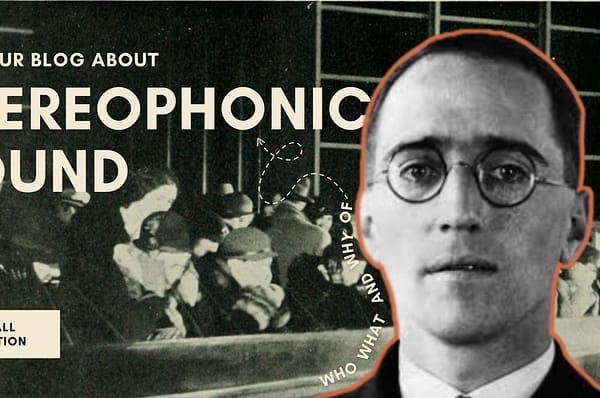Music is the universal language that tickles everyone’s ears, no matter the genre preference is. Music always has a story, whether one weaved through it or one behind it. Here is part 2 of a few facts that’ll leave your mouth hanging open and contemplating whether your entire life has been a lie.
- Bruce Springsteen’s Born In The U.S.A. is a revolt, not a solute.
In 1984, Born in the U.S.A. by Bruce Springsteen was often perceived by casual radio listeners as a patriotic anthem and was even used as a campaign song for President Reagan’s “Morning in America” campaign. Reagan mentioned Springsteen during a campaign stop in New Jersey, associating the song with American hope and youth admiration.
At first glance, Springsteen seemed to embody the image of a patriotic flag-waver, having evolved from the scruffy rocker on the cover of his 1975 album Born to Run into a muscular, headband-wearing, stadium-filling legend. When he sang the lyrics, “I was born in the U.S.A.,” it appeared to express pride and faith in America. However, the title track, Born in the U.S.A., was not the overtly nationalistic song it seemed to be. In his 2016 memoir Born to Run, Springsteen correctly labelled it as a “protest song.” The song’s angry tone is evident from the opening line: “Born down in a dead man’s town / The first kick I took was when I hit the ground.”
The lyrics narrate the story of a local individual who is forced into military service during the Vietnam War, scarred by his experiences in Southeast Asia, and then neglected by his country upon returning home. The protagonist struggles to find employment and cannot escape the memory of his brother lost in Khe Sanh. A decade after the war, all he has left is the claim of being born in the U.S.A., and he questions its significance.
Springsteen was inspired to write Born in the U.S.A. after reading the memoir Born on the Fourth of July by Vietnam veteran and antiwar activist Ron Kovic, who became friends with Springsteen. Springsteen also experienced a form of survivor’s guilt as a draft dodger during the 1960s. He actively avoided the draft and used various tactics to be declared unfit for combat, including claiming to be gay and under the influence of LSD. Ultimately, he was classified 4F due to a concussion from a motorcycle accident. Springsteen reflected on the fact that someone else had likely taken his place in the military, and he had friends who lost their lives in the Vietnam War, such as Bart Haynes, his first band’s drummer.
- Sweet Child o’ Mine was conceived in just five minutes?
Slash once described the creation of the hit song Sweet Child O’ Mine from Guns N’ Roses’ Appetite for Destruction album as an “interesting sort of pattern”. He never anticipated it would turn into a full-fledged song, considering its genesis took a mere 5 minutes.
The song reached the number one on the charts and stayed there for 24 weeks. Axl Rose, the band’s lead singer, happened to overhear Slash and Izzy Stradlin experimenting with guitar riffs in another room. He then added his poem or lyrics, inspired by his then-girlfriend, Erin Everly, to the evolving song.
- Bob Marley’s I Shot The Sheriff is about what now?
“That’s not really a sheriff, it’s the elements of wickedness. The elements of that song is people been judging you and you can’t stand it no more and you explode.”
The song by Bob Marley and The Wailers, originally about killing a sheriff in self-defense and being wrongly accused of killing a deputy, evolved into an anthem against corruption and injustice, gaining popularity and a larger fan base. Although Marley and others initially described the song as metaphorical, recent revelations have revealed a more personal connection.
According to Esther Anderson, a former girlfriend of Marley and co-director of the 2011 documentary “Bob Marley: The Making of a Legend,” the song’s lyrics were influenced by their disagreements over her use of birth control. Marley viewed using birth control as a sin, and he considered the doctor who prescribed it as the “sheriff.” This sheds new light on the song’s lyrics, particularly the line, “Sheriff John Brown always hated me/ For what, I don’t know/ Every time I plant a seed/ He said kill it before it grow.”
While people often interpreted “plant a seed” as a reference to marijuana, this revelation suggests an alternative interpretation: Marley’s frustration with a doctor prescribing birth control to his girlfriend. Lyrics can have multiple layers of meaning, and sometimes their significance evolves, even beyond the artist’s original intent – although Esther’s take on it is interesting, to say the least.
- Jimi Hendrix’s Purple Haze employs the Devil’s Tritone.
The Devil’s Tritone, often referred to as diabolus in music, is a combination of tones known for its haunting and chilling melodies, found in both classical compositions and heavy metal riffs. Religious authorities have even banned this musical interval in the past due to its ominous reputation. However, it’s not just its association with the dark side that makes the Devil’s Tritone captivating; the technicalities beneath the song are intriguing to many. This interval was banned from some Renaissance church music for sounding too evil.
Notably, this tritone can be found in various compositions, and Jimi Hendrix’s “Purple Haze” is a prime example. Music critic William Ruhlmann has described the song as having “relentlessly driving, if relatively slow-paced underlying music, which provides a good platform for some of Hendrix’s inventive guitar playing”. The dissonant opening and heavy use of distortion contribute to the song’s dirty, raw, and metallic sound, with the introduction featuring the melodic interval of a tritone.
“Our brains are wired to pick up the music that we expect, [and] generally music is consonant rather than dissonant, so we expect a nice chord. So when that chord is not quite what we expect, it gives you a little bit of an emotional frisson, because it’s strange and unexpected.”
- Digging up the archival past of Auld Lang Syne.
Auld Lang Syne is a widely recognized song associated with the new year, celebrated globally in numerous versions by artists ranging from Aretha Franklin to Alvin and the Chipmunks. Despite its enduring popularity, there’s ongoing debate over its origins and Robert Burns’s role in its creation.
Robert Burns, known as Scotland’s “Ploughman Poet,” was intimately connected to rural life and collected traditional songs during his travels. He claimed he did not write Auld Lang Syne himself but rather took it from an old man. Most experts believe Burns composed the song in 1788, drawing from various source materials that could date back to the 16th century.
The song’s intricate history is displayed in an exhibit at the Morgan Library and Museum in New York, featuring rare editions, a manuscript in Burns’s handwriting, and his letters. Burns recognized the song’s power and infused it with universal sentiments while preserving its Scottish essence. In North America, the song’s popularity owes much to New York’s privileged citizens and Canadian bandleader Guy Lombardo, who adopted it for his annual New Year’s Eve broadcasts in 1929.
The full story of Auld Lang Syne may remain somewhat of a mystery, but one thing is clear: if Burns were alive today, the song’s profits would have made him immensely wealthy.
It’s always fun to learn more about your favourite songs and singers. We at Drocer Record certainly love researching these facts! Check out part 1 and let us know if you have any musical facts that interest you!





